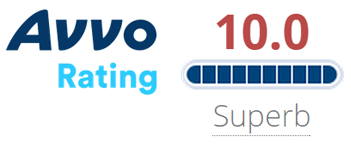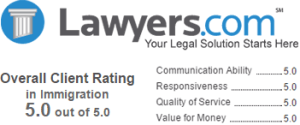Shusterman’s Immigration Update November 2018
Volume Twenty Three, Number Eleven
SHUSTERMAN’S  IMMIGRATION UPDATE is the Web’s most popular e-mail newsletter regarding US immigration laws and procedures with over 60,000 subscribers located in more than 150 countries. It is written by a former INS Trial Attorney (1976-82) with over 40 years of experience practicing immigration law.
IMMIGRATION UPDATE is the Web’s most popular e-mail newsletter regarding US immigration laws and procedures with over 60,000 subscribers located in more than 150 countries. It is written by a former INS Trial Attorney (1976-82) with over 40 years of experience practicing immigration law.
Published by the Law Offices of Carl Shusterman, 600 Wilshire Blvd, Suite 1550, Los Angeles, California, 90017. Phone: (213) 623-4592 x0.
Want to keep up to date with the latest changes in immigration laws, procedures, processing times and forms? Subscribe now to our free Immigration Newsletter, join the conversation on our Facebook Page, follow our Blog Posts and subscribe to our “How-To” Immigration Videos.
There will be no December issue of Shusterman’s Immigration Update.
Client Reviews

If You Want the Best Result Possible
“Mr. Shusterman and his law firm have represented both me personally and the nonprofit organization that I am associated with. The cases have ranged from the simple to the complex and contentious. Each case has been successfully completed. It is very simple – if you want the best result possible, then select the Law Offices of Carl Shusterman.”
- Richard B. Knapp, Chicago, Illinois
Read More Reviews
Zoom Consultations Available!
Shusterman’s Immigration Update November 2018
TABLE OF CONTENTS
1. 6 Things You Need to Know About Coming Changes to the Immigration System
2. November 2018 Visa Bulletin & Predictions for FY2019
3. Immigration Government Processing Times
4. Facebook Live – Engage with Our Attorneys in Real Time
5. Success Story: Overturning an Old Deportation Order
6. Immigration Trivia Quiz: Diversity Visa Lottery Program
7. Ask Mr. Shusterman – E-2 Treaty Investors: Welcome New Zealand
8. Shusterman’s Upcoming Immigration Seminars
9. Jobs & Green Cards for RNs & MedTechs: Free Legal Help!
10. Winner for October Immigration Trivia Quiz!
NEWS FLASHES
- High-Skilled Workers Going to Canada – The US is becoming increasingly unwelcome to high-skilled immigrants. As a result, the next Google, Apple and Amazon may get its start in Vancouver rather than Silicon Valley.
- Public Charge Rule Proposed – On October 10, DHS released a proposed rule to change “public charge” policies that govern how the use of public benefits may affect individuals’ ability to obtain legal permanent resident (LPR) status. Nearly all (94%) noncitizens who originally entered the U.S. without LPR status have at least one characteristic that DHS could potentially weigh negatively in a public charge determination.
- NAFTA/USMCA — On September 30, as part of the renegotiation of the North American Free Trade Agreement (NAFTA), the US, Canada, and Mexico reached a trilateral agreement United States-Mexico-Canada Agreement (USMCA). The NAFTA immigration provisions are largely preserved in the USMCA, with a few minor changes to the text.
- TPS – How the Government Will Comply with Preliminary Injunction – The US government has submitted declarations outlining its efforts to comply with the preliminary injunction that blocks the termination of Temporary Protected Status (TPS) for immigrants from Sudan, El Salvador, Haiti, and Nicaragua. USCIS will publish additional information in the Federal Register..
- USCIS Policy Manual Update for Spousal Naturalization – USCIS is revising guidance to clarify the “married” and “living in marital union” requirements for applicants filing for spousal naturalization. The updated guidance makes clear that the applicant and his or her U.S. citizen spouse must have been “living in marital union” (living together) for at least three years before filing.
- H-1B Petitions by Gender and Country of Birth – On October 5, the USCIS published a chart which breaks down the number of H-1B petitions which were filed in fiscal year 2018 by both the gender and the country of birth of each beneficiary. While 75% of the H-1Bs were men, in one country in the top 10, a majority of the sponsored professionals were women.
- Immigrants and Billion-Dollar Companies – Immigrants have started more than half (50 of 91, or 55%) of America’s startup companies valued at $1 billion or more and are key members of management or product development teams in more than 80% of these companies according to a new report released by the National Foundation for American Policy.
- Medical Exams Will Be Valid for 2 Years – On November 1, 2018, the USCIS will extend the validity of the medical exam required for adjustment of status applicants to 2 years, from 1 year at present. Applicants will continue to be able to submit their medical examination form together with their I-485, in response to an RFE or at their in-person adjustment of status interview.
1. 6 Things You Need to Know About Coming Changes to the Immigration System
 With the midterm elections only a week away, immigration remains an important national issue. The President has been unable to get a single important piece of immigration legislation through Congress during his first 2 years in office despite having Republican majorities in both the Senate and the House of Representatives.
With the midterm elections only a week away, immigration remains an important national issue. The President has been unable to get a single important piece of immigration legislation through Congress during his first 2 years in office despite having Republican majorities in both the Senate and the House of Representatives.
Should Democrats regain control of the House of Representatives, it will become even more difficult for the President to secure funding for his Border Wall or to reduce legal immigration by 50%.
However, the Administration has the following agenda for altering US immigration policy:
1. Separation of Families at the Border: Travel Ban on Central Americans?
Over 200 children who were separated from their parents by our government earlier this year remain in Federal custody. Meanwhile, thousands of persons from Central America continue to seek asylum in the US. In response, the President has threatened to scuttle the revised NAFTA treaty that the US recently signed with Mexico, cut off aid to Mexico and Central America and have the US military close down our border with Mexico.
Also, President Trump is looking for a way to prevent a caravan of several thousand Hondurans from reaching the US and applying for asylum. Although the percentage of Central Americans being granted asylum is quite low, passing their credible fear interview (CFI) allows them to obtain work permits while their asylum cases proceed through the already overburdened Immigration Court system. Former President Obama incarcerated thousands of Central Americans seeking asylum, but since President Trump has filled the jails with tens of thousands of immigrants, there is little room for additional prisoners.
2. Upcoming Changes for H-1B Employers, H-1B Workers and Their Spouses
USCIS is working on a plan to revamp the way employers can sponsor professional workers for H-1B temporary working visas. In October, the USCIS sent a confidential draft regulation to the Office of Management and Budget (OMB) for review. USCIS hopes to have the new system in place in time for the next H-1B lottery in April 2019. Once OMB completes its review, the USCIS will have to publish a proposed regulation and accept and respond to comments from the public before being able to publish a final regulation.
When USCIS last proposed to change the system in 2011, the agency requested that employers submit a short form containing information about the company, the job offer and the candidate. We assume that under the latest version, USCIS would select only highest paid and most qualified candidates under the Buy American, Hire American (BAHA) Executive Order before requesting that employers submit I-129 petitions. This may exclude most persons with only undergraduate degrees since over 95,000 persons with graduate degrees were petitioned for in the most recent H-1B lottery.
A revised Labor Condition Application (LCA) becomes effective in November. It will require employers submitting H-1B, H-1B1 and E-3 petitions to identify their end-clients when placing a worker at a 3rd party worksite. Employers will also have to estimate the number of foreign workers who will be placed at each location.
USCIS is expected to issue a proposed regulation in November which would rescind the regulation which currently allows certain H-4 spouses to obtain EAD work permits. This would negatively impact those spouses of H-1B professionals from India and China who must wait many years to qualify for employment-based green card.
3. Work Permission Disappears for Many Foreign-Born US University Graduates
Foreign students who graduate from US universities are eligible for one-year work permits known as Optional Practical Training. Typically, they are valid from the time that they graduate in June until one year later. The fortunate ones are granted H-1B professional working status which begins in October. They are allowed to continue working between June and October by means of a rule known as the “cap-gap”.
In the past, the USCIS has been able to decide who is eligible for H-1B status before the “cap-gap” expires at the end of September, thus insuring that US employers are not deprived of the services of these professional employees. However, this year the USCIS issued so many Requests for Evidence (RFEs) that October 1st came and went without the agency being able to complete work on thousands of H-1B petitions. The result was that these professionals lost their ability to continue doing their jobs in the US, and the government did nothing to rectify the situation.. So much for promoting “merit-based” immigration.
4. Attorney General Sessions Strips Immigration Judges of Their Independence
On October 1st, for the first time in history, Immigration Judges were ordered to complete 700 cases per year, and will be penalized if over 15% of their decisions are overturned on appeal. In addition, AG Sessions has severely limited their authority to grant continuances or to administratively close cases where applicants are eligible to apply for an immigration benefit under immigration law. More and more, Immigration Judges are being reduced to assembly line workers.
5. Public Benefits Rule Proposed by DHS
On October 10, DHS proposed a regulation which would dramatically increase the number of persons who could be denied visas and green cards based on “public charge” grounds.
For many years, our immigration laws have barred most non-citizens from receiving “means-tested public benefits” like welfare, SSI and non-emergency Medicaid. In addition, most immigrants are required to have financial sponsors to insure that they will not become public charges.
The proposed rule would greatly expand the number of federal programs that immigrants are ineligible for to include food stamps, federal housing and rental assistance, non-emergency Medicaid benefits and Medicare Part D healthcare subsidies. In addition, federal officials would be permitted to consider 15 different factors to determine whether a person is “likely to become a public charge” at any point in the future.
It is clear that this rule would reduce legal immigration to the US.
6. Administration Cuts Refugee Resettlement to Lowest Ever
While there are over 25 million refugees worldwide, the US resettles only a tiny fraction of them. In fact, less than 1% of the total number of displaced people in the world will ever be resettled to one of 36 current resettlement countries. In 2016, the US admitted more refugees than all of the other countries combined. But all this has changed, and changed dramatically.
The President sets an annual cap on the number of refugees who can be admitted to the US. The actual number who are admitted to the US is often less than the cap. In 2017, President Trump lowered the cap from 110,000 to 45,000. In 2018, he set it at 30,000, a historic low.
2. November 2018 Visa Bulletin & Predictions for FY2019
On October 12, USCIS announced that it would accept adjustment of status applications based on the “Dates for Filing” chart for both family-based and employment-based cases. Since DOS’s Charlie Oppenheim sets the “Dates for Filing” based on where he expects the final action dates will be in the next 8 to 12 months, these charts are also helpful in understanding how far the final action dates are likely to advance in the near term. Understanding these charts can help immigrants and their attorneys plan accordingly.
EMPLOYMENT-BASED CATEGORIES
The employment-based (EB) categories in the visa bulletin are as follows:
-
- EB-1 Priority Workers
- EB-2 Advanced Degree Professionals
- EB-3 Professionals & Other Workers
- EB-4 Religious Workers & Others
- EB-5 Investors
An applicant’s priority date is the day that the government received the employer’s PERM application. However, if a PERM application is not required, the priority date is the date the government received an EB visa petition (I-140, I-526). Watch our EB videos to see various methods of shortening your waiting time for a green card.
State Department’s Charlie Oppenheim’s Predictions for EB Categories
EB-1. As predicted last month, the EB-1 final action dates hold steady in November. Although it now appears likely that there will be some forward movement in December for EB-1 China, EB-1 India and EB-1 Worldwide, it remains unclear how far these categories will advance, though they will not return to current this calendar year. Charlie also cautions AILA members not to expect EB-1 Worldwide to return to current in the foreseeable future and that this is likely to be “the new normal” through at least the first half of the fiscal year.
EB-2 China and EB-3 China. EB-2 China leaps forward one and one-half months to May 15, 2015 in November, while EB-3 China holds at June 1, 2015, rendering EB-3 China only two weeks ahead of EB-2 China. Based on available demand data, members should expect EB-2 China to continue to advance. In contrast, the current demand pattern in EB-3 China continues to be heavy, prohibiting forward advancement at this time. It is unclear whether this surge in EB-3 China demand is attributable to downgrades from EB-2 or new third preference filings. This creates the possibility that EB-2 China will surpass EB-3 China again.
EB-2 India and EB-3 India. There is no advancement in November in any of the employment-based final action dates for India. The September projection of limited movement in EB-2 Indiacontinues to apply, and any advancement that may occur in December will be limited to no more than one week. In contrast, demand in EB-3 India is light, so members should start to see a fairly sizeable advancement in this category of at least a few weeks (and possibly months) in December.
The EB-3 India final action date moved very rapidly over the past year, advancing almost one and one-half years. Current demand projections make it likely that EB-3 India could surpass EB-2 India at some point this fiscal year.
EB-3 Philippines and Other Workers Philippines. In November, EB-3 Philippines and Other Workers Philippines advances one week to June 8, 2017. Members should continue to expect only minimal movement in this category during the first quarter of the fiscal year. This slow forward movement is based on a concern that rapid forward movement during the past year will eventually result in an increased level of demand.
EB-4. The final action date for EB-4 El Salvador, Guatemala and Honduras holds at February 15, 2016 in November due to a significant amount of potential demand prior to that date, and pre-adjudicated demand beyond it. EB-4 Mexico will continue to advance at a steady pace until it reaches its per country limit, at which time it will return to the same final action date as EB-4 El Salvador, Guatemala and Honduras. It will probably take until at least the spring for this to occur.
EB-5. EB-5 (Regional Center and Non-Regional Center) China holds at August 15, 2014 in November, with EB-5 (Regional Center and Non-Regional Center) Vietnam continuing to advance until it reaches its per country limit, at which time, its final action date will track that of EB-5 China.
VISA BULLETIN – EMPLOYMENT
A. APPLICATION FINAL ACTION DATES FOR EMPLOYMENT-BASED PREFERENCE CASES –
| World | China | El Salvador, Guatemala, Honduras | India | Mexico | Philippines | Vietnam | |
|---|---|---|---|---|---|---|---|
| 1st | 4-01-17 | 6-01-16 | 4-01-17 | 6-01-16 | 4-01-17 | 4-01-17 | 4-01-17 |
| 2nd | Current | 4-01-15 | Current | 3-26-09 | Current | Current | Current |
| 3rd | Current | 6-01-15 | Current | 1-01-09 | Current | 6-01-17 | Current |
| Unskilled | Current | 5-01-07 | Current | 1-01-09 | Current | 6-01-17 | Current |
| 4th | Current | Current | 2-15-16 | Current | 10-22-16 | Current | Current |
| 5th | Current | 8-15-14 | Current | Current | Current | Current | 1-01-16 |
B. DATES FOR FILING OF EMPLOYMENT-BASED VISA APPLICATIONS – The chart below reflects dates for filing visa applications within a timeframe justifying immediate action in the application process. Applicants for immigrant visas who have a priority date earlier than the application date in the chart may assemble and submit required documents to the Department of State’s National Visa Center, following receipt of notification from the National Visa Center containing detailed instructions. The application date for an oversubscribed category is the priority date of the first applicant who cannot submit documentation to the National Visa Center for an immigrant visa.
| World | China | El Salvador, Guatemala, Honduras | India | Mexico | Philippines | |
|---|---|---|---|---|---|---|
| 1st | 6-01-18 | 10-01-17 | 6-01-18 | 10-01-17 | 6-01-18 | 6-01-18 |
| 2nd | Current | 6-15-15 | Current | 5-22-09 | Current | Current |
| 3rd | Current | 8-08-15 | Current | 10-01-09 | Current | 7-01-17 |
| Unskilled | Current | 6-01-08 | Current | 10-01-09 | Current | 7-01-17 |
| 4th | Current | Current | 5-01-16 | Current | Current | Current |
| 5th | Current | 10-01-14 | Current | Current | Current | Current |
FAMILY-BASED CATEGORIES
The family-based categories in the visa bulletin are as follows:
- F-1 Unmarried Adult Sons & Daughters of US Citizens
- F-2A Spouses & Children of LPRs
- F-2B Unmarried Adult Sons & Daughters of LPRs
- F-3 Married Sons & Daughters of US citizens
- F-4 Brothers & Sisters of US Citizens
An applicant’s priority date is the day that the government received the I-130 Petition. For more on family-based visas and how you may be able to shorten your waiting time, see Attorney Shusterman’s video.
State Department’s Charlie Oppenheim’s Predictions for FB Categories
All of the family-based final action dates advance in November with the exception of FB-1 Mexico and FB-3 Mexico, which will hold at August 1, 1997 and December 22, 1995. Charlie reports that responses to Agent of Choice letters remain low.
Demand for FB-3 India is extremely heavy. Charlie reports that he has not previously seen this much consistent demand in the FB-3 category in any other country.
VISA BULLETIN – FAMILY
A. APPLICATION FINAL ACTION DATES FOR FAMILY-SPONSORED PREFERENCE CASES– These dates are consistent with prior visa bulletin priority dates.
| World | China | India | Mexico | Philippines | |
|---|---|---|---|---|---|
| 1st | 6-01-11 | 6-01-11 | 6-01-11 | 8-01-97 | 12-22-06 |
| 2A | 8-22-16 | 8-22-16 | 8-22-16 | 8-01-16 | 8-22-16 |
| 2B | 11-22-11 | 11-22-11 | 11-22-11 | 5-15-97 | 5-15-07 |
| 3rd | 6-15-06 | 6-15-06 | 6-15-06 | 12-22-95 | 6-08-95 |
| 4th | 2-15-05 | 2-15-05 | 5-01-04 | 1-22-98 | 6-08-95 |
B. DATES FOR FILING FAMILY-SPONSORED VISA APPLICATIONS – The chart below reflects dates for filing visa applications within a timeframe justifying immediate action in the application process. Applicants for immigrant visas who have a priority date earlier than the application date in the chart may assemble and submit required documents to the Department of State’s National Visa Center, following receipt of notification from the National Visa Center containing detailed instructions. The application date for an oversubscribed category is the priority date of the first applicant who cannot submit documentation to the National Visa Center for an immigrant visa.
| World | China | India | Mexico | Philippines | |
|---|---|---|---|---|---|
| 1st | 3-08-12 | 3-08-12 | 3-08-12 | 10-08-98 | 2-15-08 |
| 2A | 12-01-17 | 12-01-17 | 12-01-17 | 12-01-17 | 12-01-17 |
| 2B | 3-22-14 | 3-22-14 | 3-22-14 | 6-22-97 | 12-15-07 |
| 3rd | 1-08-07 | 1-08-07 | 1-08-07 | 12-22-98 | 6-01-97 |
| 4th | 6-01-05 | 6-01-05 | 1-01-05 | 6-22-98 | 4-08-96 |
A priority date is established by the submission of a relative visa petition (Form I-130) in the family categories.
The word “Current” indicates that no backlog presently exists in a particular category. Alternately, the word “Unavailable” indicates that it is not possible to apply for permanent residence in that category.
The dates in the Visa Bulletin can be misleading. They may look closer on the Bulletin than they are in reality.
3. Immigration Government Processing Times
 We link to the most recent immigration waiting times for each of the four USCIS Service Centers, the National Benefits Center and the Administrative Appeals Office. We also link to the processing times of all of the 83 USCIS District Offices and Sub-offices. We link to the Labor Department’s page entitled “Processing dates for labor certification applications”. Finally, we link to the State Department’s “Visa Wait Times” page.
We link to the most recent immigration waiting times for each of the four USCIS Service Centers, the National Benefits Center and the Administrative Appeals Office. We also link to the processing times of all of the 83 USCIS District Offices and Sub-offices. We link to the Labor Department’s page entitled “Processing dates for labor certification applications”. Finally, we link to the State Department’s “Visa Wait Times” page.
4. Facebook Live – Engage with Our Attorneys in Real Time
In our Facebook Live videos, our attorneys discuss a wide range of immigration topics and take questions online. We announce each topic in advance on the Breaking Immigration News section on our homepage.
Facebook Live allows us to provide tips and information regarding immigration law, while also providing viewers the opportunity to ask questions during the broadcast.
You can watch videos of our previous Facebook Live sessions below:
Direct EB-5s |
How to Stop Deportation Under Pereira v. Sessions |
US Immigration for Registered Nurses |
Stop Deportations using Pereira v. Sessions |
Winning Your Case in Immigration Court |
Our goal is to help you understand how immigration laws, regulations and procedures affect you.
5. Success Story: Overturning an Old Deportation Order

This month’s success story explains how we were able keep a family united by demonstrating that our client deserved a waiver of an old deportation order.
I specialize in removal defense and family immigration. I prepare waivers for various grounds of inadmissibility. Inadmissibility means someone cannot obtain lawful permanent residence or a green card due to some activity, for example, fraud, a criminal conviction or, in this case, a prior Order of Deportation.
In this case, our client had a long history with immigration. In 1982, when our client first attempted to cross the border, she was caught and ordered deported by an Immigration Judge. She subsequently attempted to reenter a year or so after, due to various reasons and issues in her home country. On her second try, she was able to cross the border.
Years later, she married a US citizen who filed a petition for her in the 1990s. Although the petition was approved, she was too scared to file a green card application. She was afraid the Immigration Service would arrest her and send her back to her country. She went on to have 5 US citizen children. After reading our newsletters for many years, she decided to schedule a consultation with our law firm.
I determined that she was eligible to apply for an I-212 waiver. I worked together with our client to obtain evidence to show she deserved to remain in the United States. This evidence included medical reports, proof of family ties to the United States and evidence of good moral character.
Just short of two years after filing the green card application with the I-212 waiver, I attended the interview with our client. A week later, our client received not only the approval notice for her waiver but also her green card!
We are thrilled that after 37 years, our client can lawfully remain in the United States with her citizen husband, her 5 citizen children and her 4 citizen grandchildren.
6. Immigration Trivia Quiz: Diversity Visa Lottery Program
Quiz Removed
7. Ask Mr. Shusterman – E-2 Treaty Investors: Welcome New Zealand
 In October, the United States and New Zealand entered into an agreement which allows citizens of New Zealand to open businesses in the US and get E-1 Treaty Trader and E-2 Treaty Investor Visas to manage their companies in the US.
In October, the United States and New Zealand entered into an agreement which allows citizens of New Zealand to open businesses in the US and get E-1 Treaty Trader and E-2 Treaty Investor Visas to manage their companies in the US.
8. Shusterman’s Upcoming Immigration Seminars

American Immigration Lawyers Association
Lima, Peru
November 16, 2018
Topic: Dissecting Unlawful Presence and Preparing your Client for Visa Interviews Abroad
American Immigration Lawyers Association
Law Practice Management Conference
Las Vegas, Nevada
February 22-23, 2019
Topic: TBA
9. Jobs & Green Cards for RNs & MedTechs – Free Legal Help!
Are you a Registered Nurse or a Medical Technologist or a Speech Language Pathologist who is looking for a job in the US?
What if you could find a job, a work visa, and green cards for you and your family to live in the US? And what if the cost to you for all of this was zero dollars?
Hard to believe? Let me explain:
Our law firm represents over 100 hospitals across the country, and the nurse shortage in the US is coming back.
Our hospitals are in need of hundreds of RNs as well as Medical Technologists and other healthcare professionals. They are looking for both US and foreign-born RNs, and they will pay all of our attorneys’ fees, USCIS filing fees and more!
We have a video and a web page for those who are interested in applying for employment and sponsorship.
If you are a foreign nurse, a medical technologist or a speech language pathologist and need a job in the US and the job requires a work visa and/or green card, please do the following:
Send an e-mail message to egarcia@shusterman.com
In your message, please provide the following information:
1. Have you passed the NCLEX exam?
2. Do you have a current RN license in the US? If so, from what state(s)?
3. Have you taken and passed the IELTS or TOEFL exam?
4. Do you have a valid VisaScreen certificate?
5. Do you have any immediate family members accompanying you to the United States (spouse and children)?
6. Have you ever been petitioned by any US sponsor and hold an old priority date? If so, what is your priority date?
7. If you are present in the US, what is your current immigration status?
8. What is your RN background (area of expertise)?
9. What is your country of birth?
10. What is your country of citizenship?
11. What is your phone number?
If you are a CLS or a Speech Language Pathologist, please amend the above questions accordingly.
We will forward your response to our hospitals, and if they are interested, they will contact you.
We look forward to helping you.
10. Winner for Our October 2018 Immigration Trivia Quiz!
Quiz Removed
Here are the answers from our winner, Keralea P.:
“Hi there!
Did anyone get this right yet? I have the answers to all three!!:
1. Guillermo del Toro of Mexico – The Shape of Water
2. Eduardo Sanchez of Cuba – The Blair Witch Project
3. James Wan of Australia (born in Malaysia) – Saw
I would love the chance to consult with the infamous office of Carl Shusterman! I am a Canadian here in Los Angeles and have a submission deadline coming up.”
Congratulations, Keralea P.! And thank you for keeping up with our newsletter!
Carl Shusterman
Certified Specialist in Immigration Law, State Bar of California
Immigration and Naturalization Service (INS) Attorney (1976-82)
Member of AILA Board of Governors (1988-97)
Law Offices of Carl Shusterman, 600 Wilshire Blvd., Suite 1550
Los Angeles, CA 90017
Phone: (213) 623-4592 x0, Fax: (213) 623-3720
“After separating babies from parents along the U.S.-Mexico border and drawing ire and outrage across the country and around the world, now the president is threatening to use military action against men, women, and children who are fleeing a hopeless situation. America is better than this.”
– Ali Noorani
Executive Director
National Immigration Forum
Opinion, Fox News
Shusterman’s Immigration Update November 2018 – Quick Links
About Us
Back Issues of Our Newsletter
Citizenship
Client Testimonials
EB-5 Investors
Forms Download
Green Cards
Job Search
PERM
Processing Times
Schedule a Legal Consultation
Subscribe to Our Newsletter
Success Stories
Temporary Visas
Visa Bulletin
October 29, 2018








